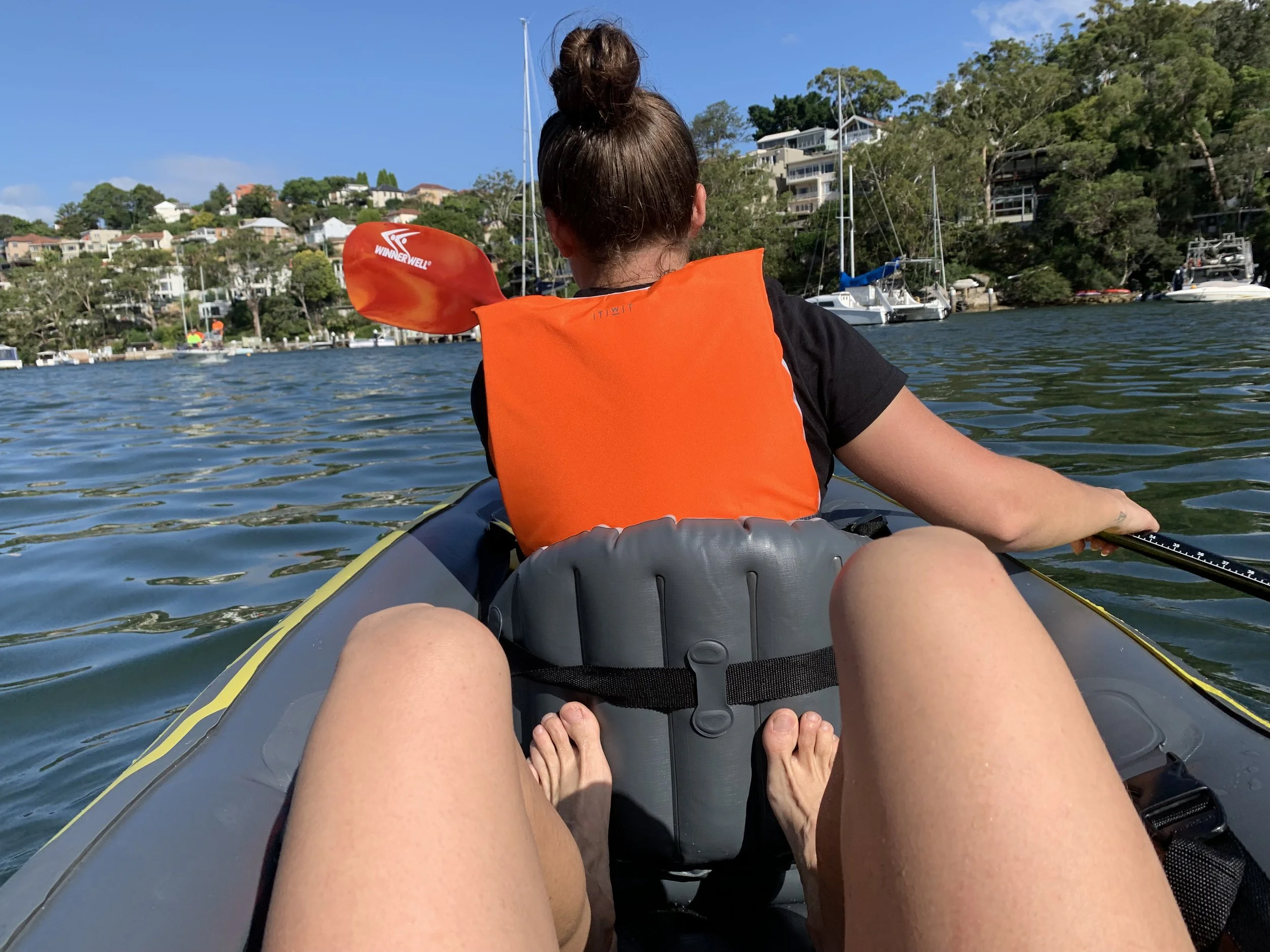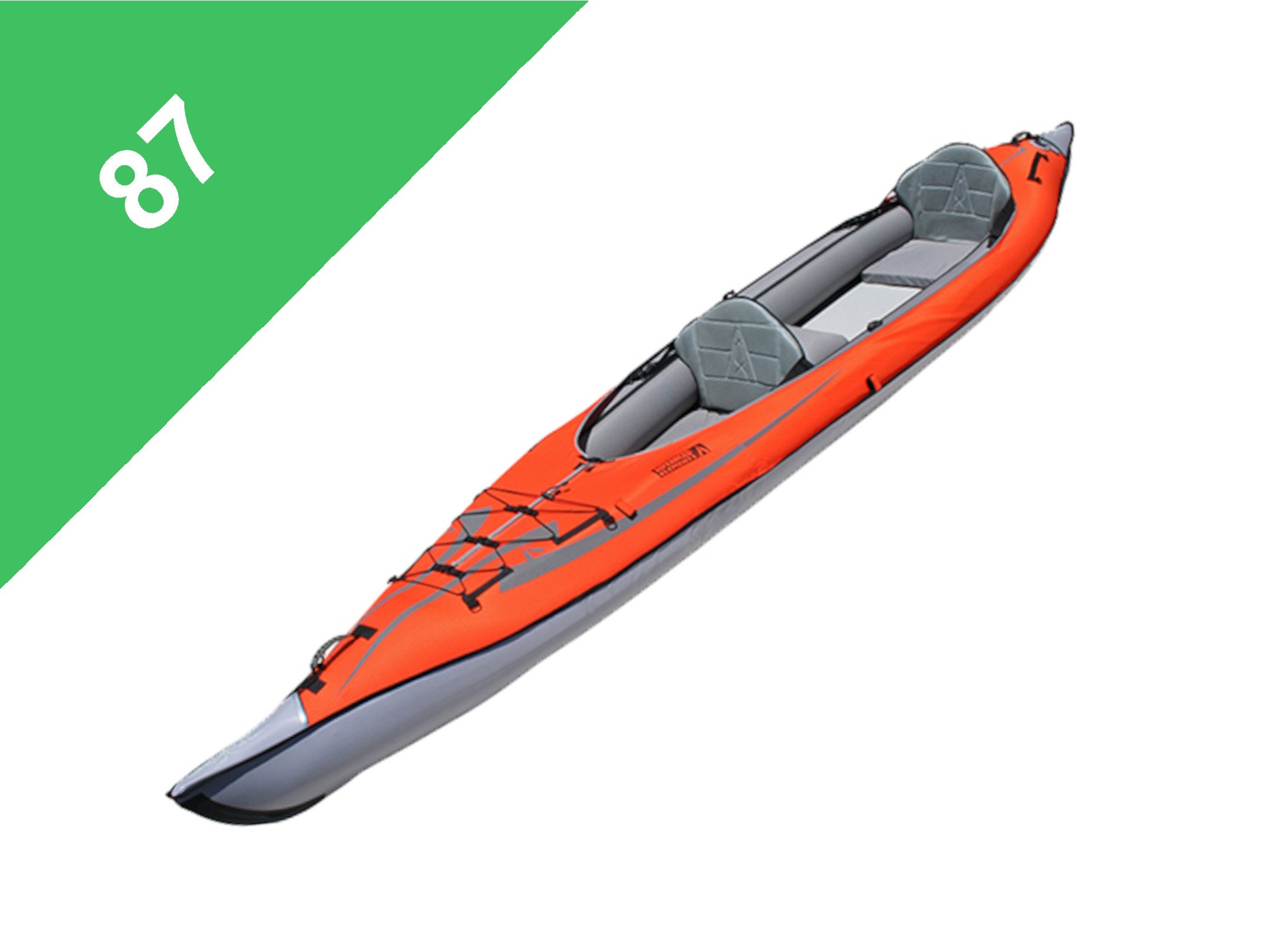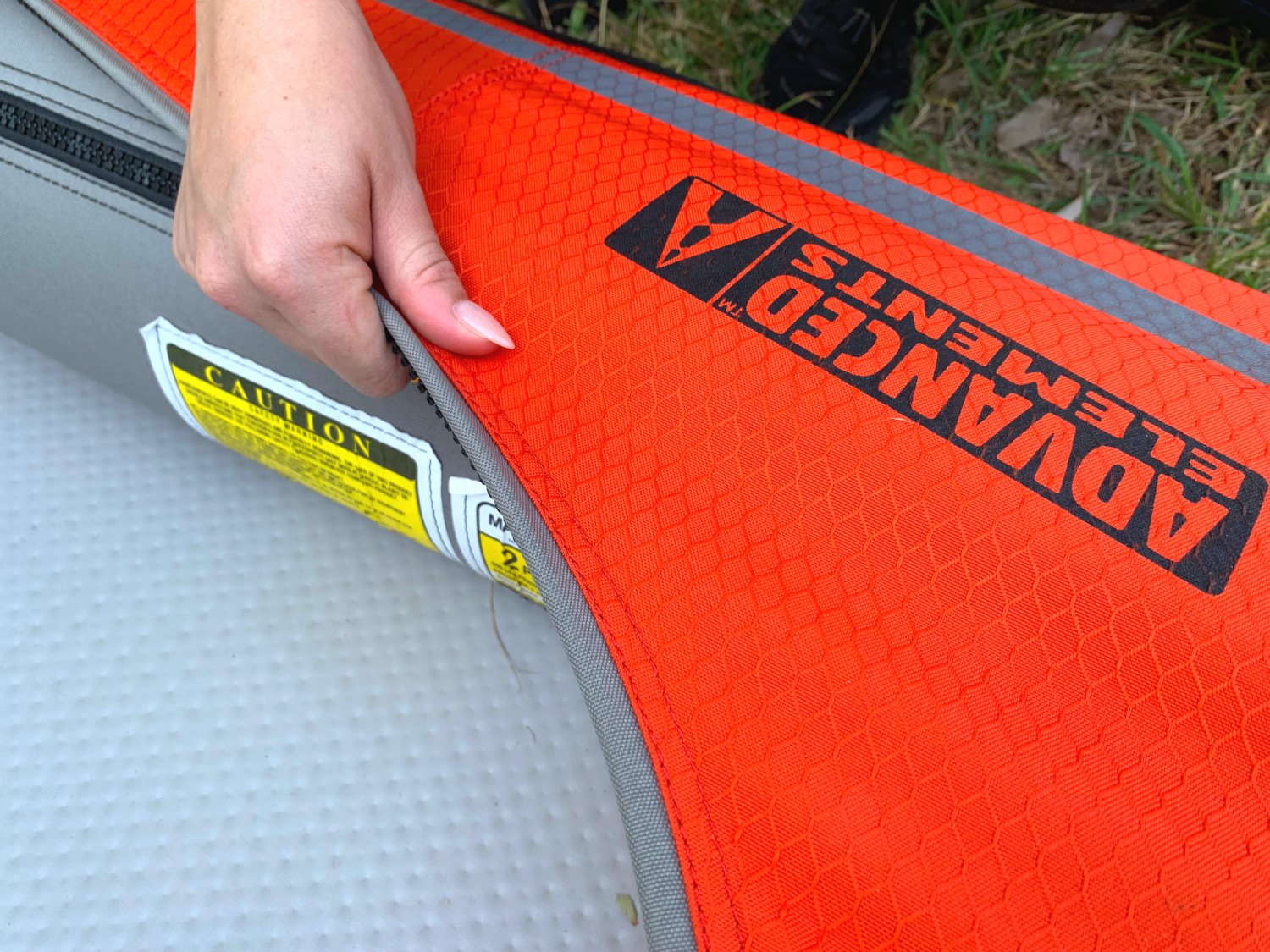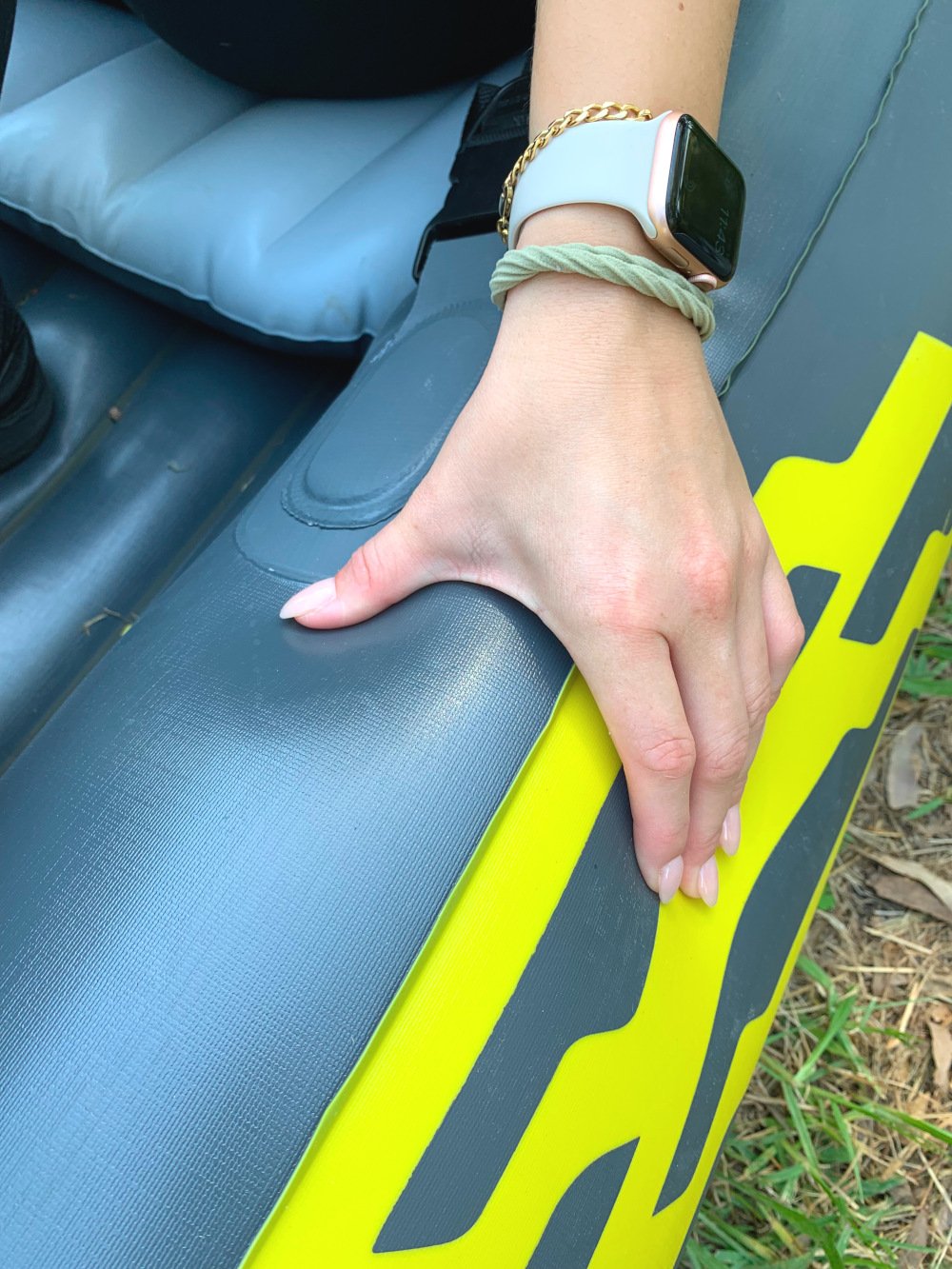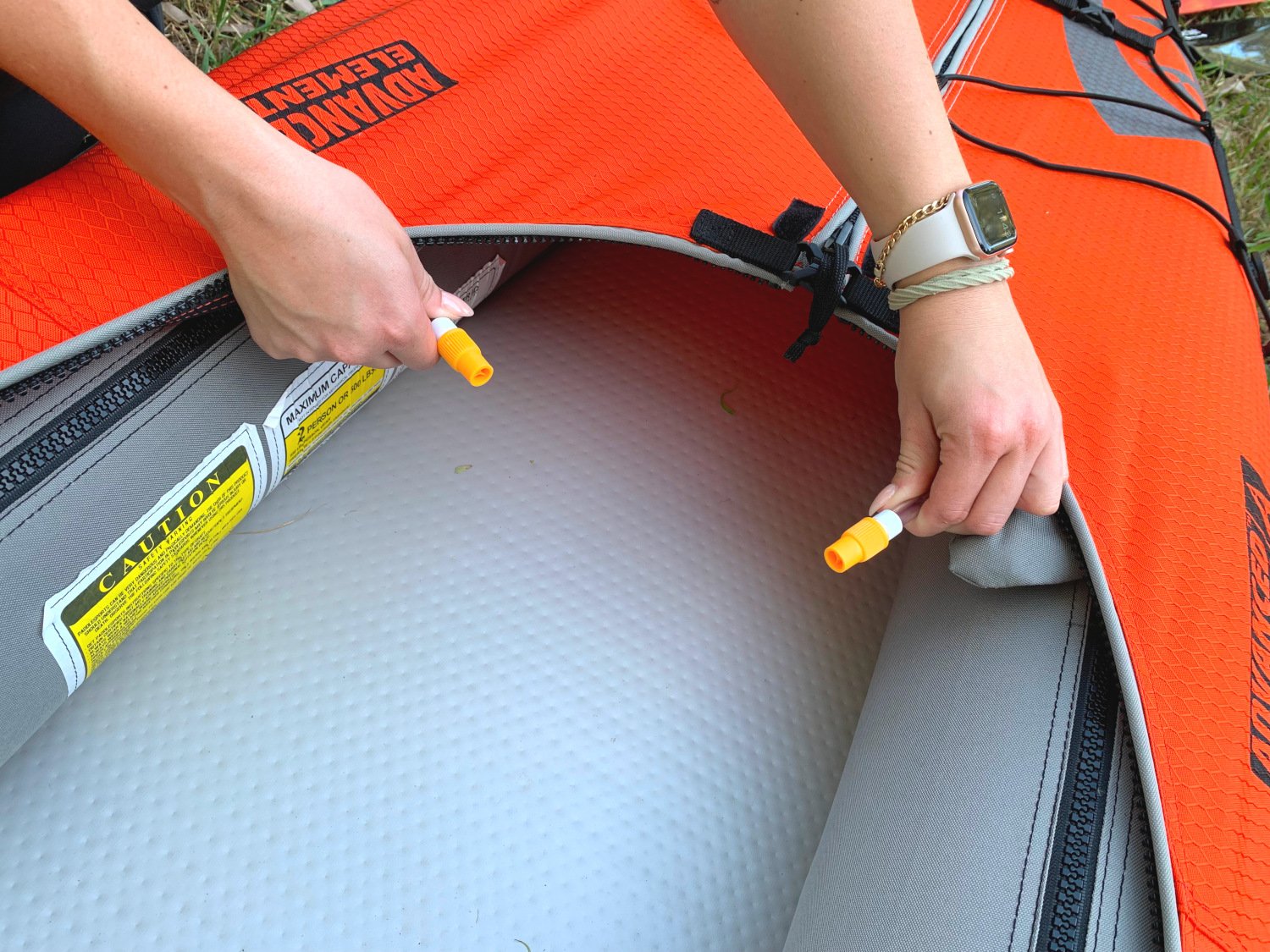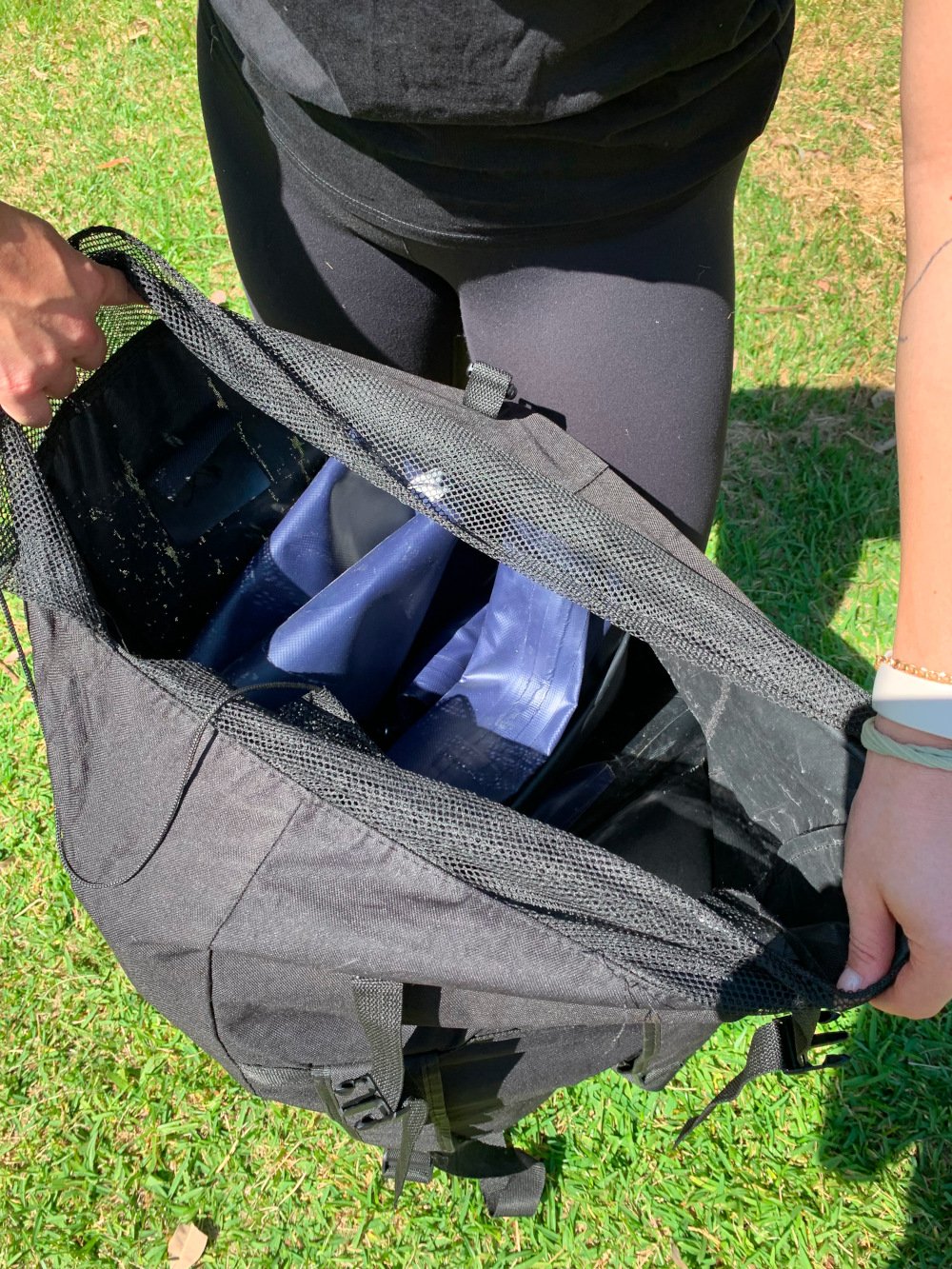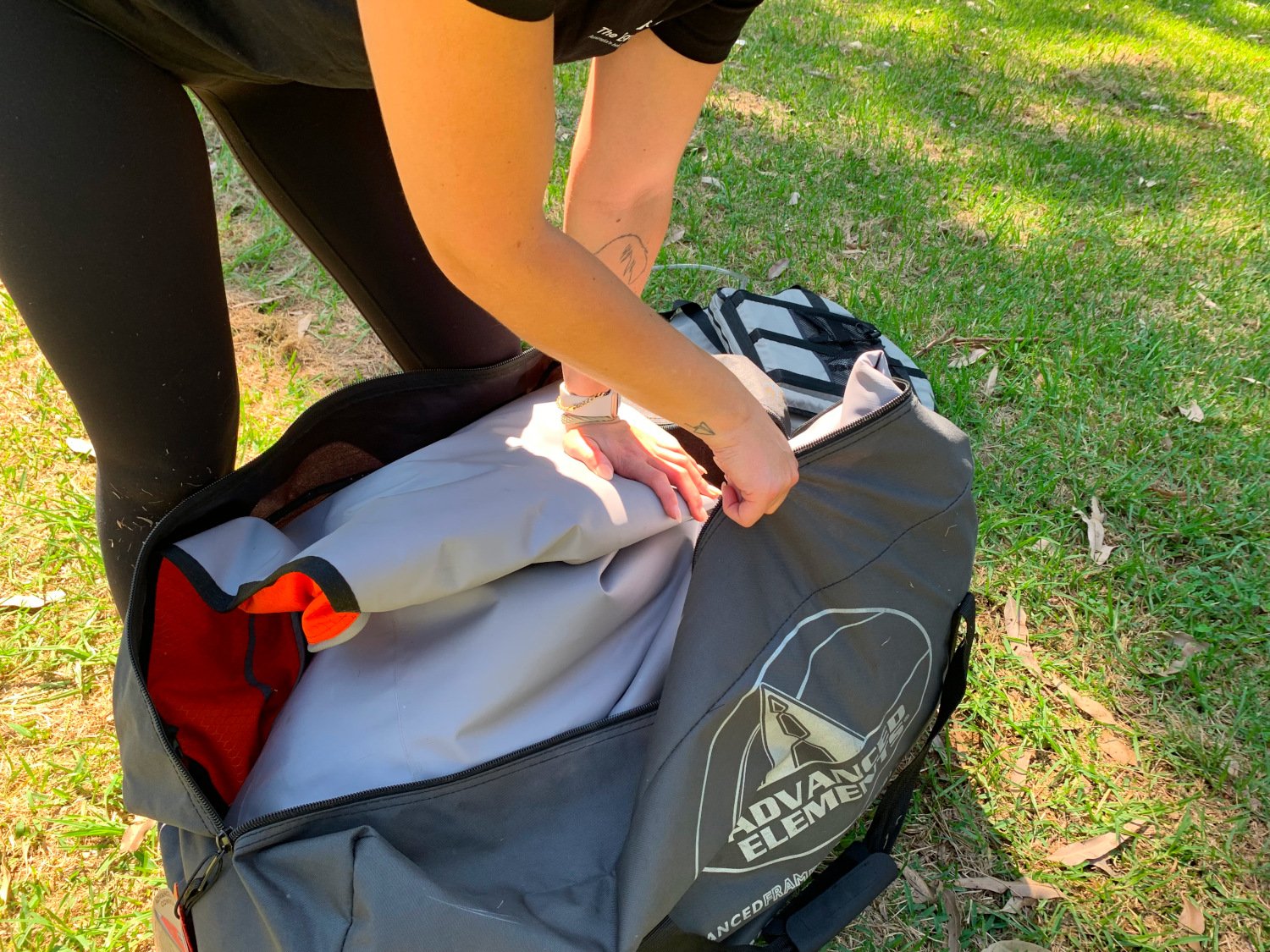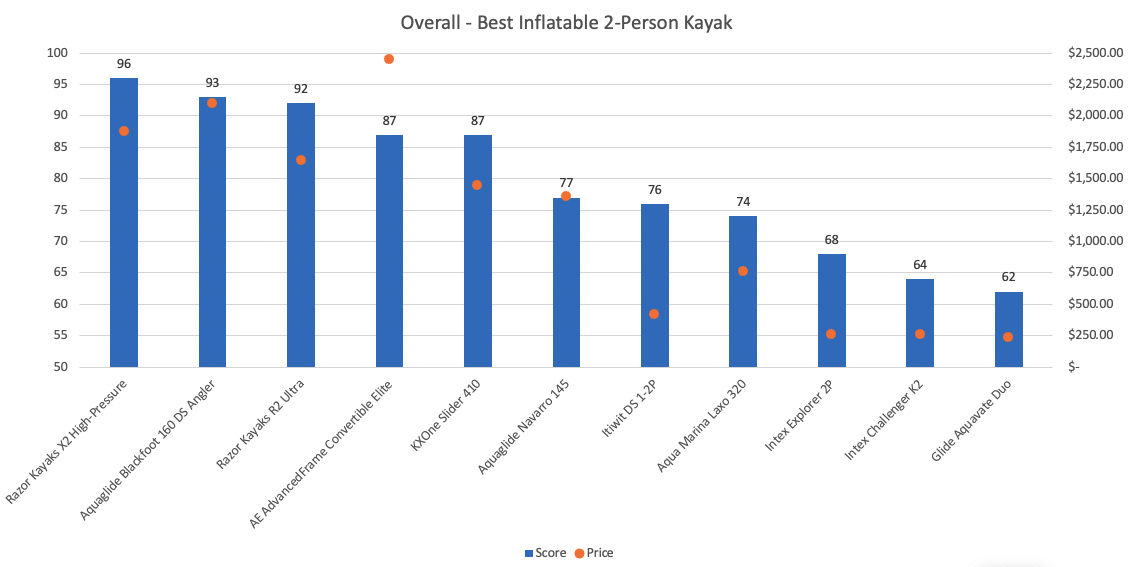Best 2-Person Inflatable Kayak Australia 2025
Tested across Australian rivers, lakes and coastlines.
Looking for a kayak for weekend adventures, family fun, or exploring on a budget? We've tested the top models on Australian waters, so you don't have to.
Our hands-on testing focuses on what matters most: stability for beginners, performance for adventurers, durability against sharp rocks and overall value for your money. Skip the guesswork and find the best tandem kayak for you, backed by our real-world paddling experience. Use the 'Read Full Review' links below to access a detailed assessment of each product or watch our video, and visit our best inflatable kayak Australia page if you’re after reviews of 1-person kayaks.
Quick Picks
Best Overall: Razor Kayaks X2 High-Pressure
Best for Beginners: Intex Explorer K2
Best Budget Option: Itiwit 1–2-Person Touring
Best Performance/Touring Kayak: Advanced Elements AdvancedFrame Convertible Elite
Updated 24th November 2025: Added FAQs about tandem inflatable kayaks
2-Person Inflatable Kayak Reviews Australia
Razor Kayaks X2 High-Pressure
Price At Time Of Writing | $1,879.00
Overall Rating | 96
Performance | 9
Construction | 10
Setup/Pack Down | 9
Portability | 8
Comfort | 10
Open Size - 473x71cm
Weight - 16.4kg
Load Capacity - 317kg
Packed Size - 90x55x45cm
Best For - Couples looking for comfort and performance
Pros - Well-made, comfortable, durable
Cons - Expensive
Overall - A high-end tandem inflatable kayak
Aquaglide Blackfoot 160 DS Angler
Price At Time Of Writing | $2,099.00
Overall Rating | 93
Performance | 8
Construction | 9
Setup/Pack Down | 8
Portability | 7
Comfort | 10
Open Size - 498x96.5cm
Weight - 22.5kg
Load Capacity - 363kg
Packed Size - 92x60x43cm
Best For - Serious anglers needing stability
Pros - Stable, spacious, versatile
Cons - Slow inflation, storage isn’t waterproof
Overall - An excellent kayak for fishing and recreation use
Razor Kayaks R2 Ultra
Price At Time Of Writing | $1,649.00
Overall Rating | 92
Performance | 8
Construction | 7
Setup/Pack Down | 9
Portability | 9
Comfort | 9
Open Size - 430x78cm
Weight - 12.9kg
Load Capacity - 288kg
Packed Size - 80x50x35cm
Best For - All-round performance on various waters
Pros - Lightweight, easy to manoeuvre, quick inflation, durable
Cons - Non-waterproof storage
Overall - Great value for versatile use
Advanced Elements AdvancedFrame Convertible Elite
Price At Time Of Writing | $2,449.00
Overall Rating | 87
Performance | 9
Construction | 8
Setup/Pack Down | 8
Portability | 7
Comfort | 8
Open Size - 460x82cm
Weight - 23.5kg
Load Capacity - 249kg
Packed Size - 93x56x31cm
Best For - Touring with a companion
Pros - Fast, high load capacity, stable
Cons - Heavy, narrow, slow setup
Overall - A stable and fast kayak that has its downsides
KXOne Slider 410
Price At Time Of Writing | $1,448.00
Overall Rating | 87
Performance | 7
Construction | 7
Setup/Pack Down | 8
Portability | 8
Comfort | 7
Open Size - 410x85cm
Weight - 15.5kg
Load Capacity - 210kg
Packed Size - 85x45x30cm
Best For - Recreational paddling on all waters
Pros - Easy setup, well-made
Cons - Too short for two
Overall - A high quality that can be improved
Aquaglide Navarro 145
Price At Time Of Writing | $1,359.00
Overall Rating | 77
Performance | 5
Construction | 5
Setup/Pack Down | 5
Portability | 6
Comfort | 8
Open Size - 437x99cm
Weight - 16.3kg
Load Capacity - 277kg
Packed Size - 68x63x27cm
Best For - Multi-day expeditions and versatile use
Pros - Sturdy, easy to use
Cons - Lacks accessories, poor tracking
Overall - Multi-day expeditions and versatile use
Itiwit 1–2-Person Touring
Price At Time Of Writing | $419.00
Overall Rating | 76
Performance | 5
Construction | 7
Setup/Pack Down | 5
Portability | 7
Comfort | 8
Open Size - 340x103cm
Weight - 14kg
Load Capacity - 150kg
Packed Size - 67x44x27cm
Best For - Occasional calm water paddling
Pros - Affordable, stable
Cons - Uncomfortable seats, limited space, poor tracking
Overall - Suitable for short outings
Aqua Marina Laxo 320
Price At Time Of Writing | $759.99
Overall Rating | 74
Performance | 5
Construction | 6
Setup/Pack Down | 5
Portability | 5
Comfort | 3
Open Size - 320x90cm
Weight - 12kg
Load Capacity - 180kg
Packed Size - 90x55x40cm
Best For - Casual paddling on calm waters
Pros - Easy setup, good tracking
Cons - Cramped cockpit, no footrests
Overall - Decent for short trips
Intex Explorer K2
Price At Time Of Writing | $259.00
Overall Rating | 68
Performance | 3
Construction | 4
Setup/Pack Down | 5
Portability | 4
Comfort | 2
Open Size - 312x91cm
Weight - 14kg
Load Capacity - 180kg
Packed Size - 59x34x41cm
Best For - Budget-friendly family fun
Pros - Affordable, stable
Cons - Minimal storage, poor tracking, bulky sides
Overall - Great for beginners
Intex Challenger K2
Price At Time Of Writing | $259.00
Overall Rating | 64
Performance | 3
Construction | 2
Setup/Pack Down | 5
Portability | 3
Comfort | 1
Open Size - 351x76cm
Weight - 17.3kg
Load Capacity - 181kg
Packed Size - 71x46x30cm
Best For - Recreational paddling on calm waters
Pros - Stable, easy setup, cheap
Cons - Uncomfortable seats, poor quality
Overall - Good for casual use
Glide Aquavate Duo
Price At Time Of Writing | $239.00
Overall Rating | 62
Performance | 1
Construction | 2
Setup/Pack Down | 5
Portability | 3
Comfort | 1
Open Size - 328x92cm
Weight - 9kg
Load Capacity - 180kg
Packed Size - 72x22x35cm
Best For - Lightweight option for kids
Pros - Lightweight, compact, cheap
Cons - Difficult to paddle, uncomfortable
Overall - Best for short, calm water use
Watch our video review to explore the best 2-person inflatable kayaks, category by category
Watch our video review to explore the best 2-person inflatable kayaks, category by category
Advice we’d give to a friend
The Basics
How do they actually perform in the water? - We initially thought that these kayaks wouldn't perform as well as typical hard shell kayaks, but it turns out that some of them actually do. This is primarily true for the more expensive versions, so it is not surprising that some of the more affordable types are slower and less durable.
Will inflatable kayaks puncture or fall apart? - No. High-quality inflatable kayaks are incredibly durable; some even use materials with a density of 1,000 denier, which are identical to those used in rescue boats. We think it's best to avoid less costly models because they might be made from materials used in pool toys.
Is setup difficult on inflatable kayaks? - The speed of setup and pack down varies greatly depending on the kayak. Some, like the foldable kayak types or inflatables with only three inflation points, were much simpler to set up. Others, like AdvancedElements, have several inflation points — seven to ten depending on the model — and take a long time to dry, which we found to be a bit tedious.
Should I get an inflatable kayak? - Yes. In addition to the obvious storage advantages, they actually offer up new avenues for wilderness exploration. A decent transportable kayak is something you'll get good use out of because they are so portable and handle well on the water.
How long do inflatable kayaks last? - We didn’t notice any problems with durability, and we believe they will survive for many years. The highest-rated kayaks are well-built and made of high-quality materials. You cannot say the same about some of the less expensive models; with those, you get what you pay for. Longevity will increase with proper maintenance.
Budget
Price is often important when it comes to inflatable kayaks and foldable kayaks. Even though there will always be exceptions, at the time of writing, we could divide the market into three groups:
Over $1,600 - You can usually find a great kayak for this price that is well-made and will function well on the water.
$1000 to $1,600 - These kayaks are still sturdy, but they'll often go through the water more slowly and bulkily than some of the more expensive versions.
Under $1000 - These kayaks tend to be poorly constructed, consisting of flimsy materials that may puncture, or are so slow in the water that they are uncomfortable to paddle. We advise you to spend a little more money to avoid making a regrettable purchase.
How will you use your kayak?
It is recommended to spend the money on something in the $1,600+ range if you're looking for something to use for regular training or touring on multi-day vacations. The kayaks in the $1000 to $1,600 range often offer a little bit more space and will be more durable than cheaper versions if it's just for leisure activities like fishing, kayaking with the family dog or taking the kids for some water adventures.
Pure 2-Person vs. 1–2-Person Convertible Kayaks
Pure 2-person kayaks are made just for two individuals to paddle together, providing an enjoyable, communal experience. Can a two-person inflatable kayak be used by one person? Yes. There are 1–2-person convertible kayaks that can be altered to fit one person for a roomier ride or two people for a snug tandem adventure or a voyage through more treacherous waters.
Take notice of the length if you're thinking of a 1–2 or even a 2–3-person convertible kayak. A kayak will be unpleasant for two or more people if it is excessively short. To ensure that you won't be crowded, look for kayaks that are at least 425cm length.
Considerations for Australian Conditions
When you’re picking a 2-person inflatable kayak for Australia, there are a few extra things to think about to make sure it lasts, performs well and stays safe:
Sun and UV damage - The Aussie sun is no joke, with even the toughest kayaks starting to degrade if left out too long. Look for models with UV-protected material, and whenever you can, store your kayak in the shade or indoors. A quick spray of UV protectant now and then can go a long way.
Saltwater vs freshwater - If you’re planning to paddle in the ocean, make sure to give your kayak a good rinse with fresh water afterwards. Salt can be harsh on materials and fittings, so this simple step will keep your kayak in shape for years. Some kayaks handle saltwater better than others, so check what your model is rated for.
Storage and transport - 2-person kayaks are bigger than solo ones, so think about where you’ll store it and how you’ll get it to the water. Make sure it fits in your car or garage and look for ones that come with a handy carry bag or backpack for easier transport.
Warranty and repairs - Buying from brands with local distributors is a huge plus. It makes getting replacement parts or claiming a warranty way easier. Having a repair kit or access to local repairs can save a lot of stress if you hit a snag on a multi-day trip.
Drying and humidity - We Aussies know that our summers can be hot and humid, which means kayaks can get damp fast. Always make sure your kayak is completely dry before packing it away, and store it somewhere cool and ventilated to prevent mildew
Rivers, lakes, and coasts - Depending on where you’re paddling, you might hit wind, waves, or currents. Look for kayaks that are stable and well-built so you can handle Australia’s rivers, lakes and coastal conditions safely and comfortably.
Safety Checklist
Wear a Type 1, 2, or 3 PFD (Personal Flotation Device) - In all Australian states, wearing a PFD is mandatory when kayaking in most circumstances. Make sure your PFD is appropriately sized and in good condition.
Equip Yourself with Essential Safety Gear - Certain gear can help you be prepared for an emergency, such as a 15m tow rope, a manual bilge pump, sponge and deck lines. Include a repair kit with patches and adhesive suitable for your kayak's material. Find more examples by Transport WA.
Stay Informed and Prepared - Check weather forecasts before heading out and let someone know about your trip and expected return time.
Ratings By Category
Method
We have a methodology that aids in our analysis and understanding of each kayak’s attributes. Following a market analysis, we select from a variety of stores what we believe to be the best inflatable kayak in each category. Every product is given a 50-point starting score. In order to grade them on a scale of 1 to 10 in categories like Performance, Construction, Setup/Pack Down, Portability and Comfort, we then perform field tests and hands-on evaluations.
We modify ranks based on significance and degree of variance to maintain fairness. For instance, while some categories may use a range like 4 to 9, some may use a range like 1 to 10, with occasional outliers. Our goal is to provide a concise and accurate description of how we rank each kayak and the factors that went into that decision.
We want to provide you with all the knowledge you need if you're looking for an inflatable kayak in Australia. Whether you're looking for the best all-around kayak or a kayak designed for a particular purpose, we think a thorough inflatable kayak review can help you make an informed choice.
Testing Methodology
All the tandem inflatable kayaks we review are tested hands-on by two paddlers in real Australian paddling conditions. Once on the water, each model goes through a detailed setup and inspection phase where we check its build quality, valve integrity, seam strength and how easy it is for two people to inflate, deflate and pack down. We also measure the kayak's weight, inflated dimensions and packed size to confirm they match the manufacturer’s claims.
Then, we take the tandem kayaks out for a series of performance trials designed for two paddlers. This includes testing speed over distance with both people paddling, how well the kayak tracks in calm conditions and against typical Australian winds and its maneuverability for navigating tight spots. We test its stability with two adults and a load of gear, and how comfortable the seating is for both occupants over longer paddles. We also test how the kayak handles at different load levels and in mild chop to simulate conditions found in Australian harbours, bays and estuaries.
Finally, we assess the long-term durability and usability of the two-person inflatable kayak by repeating inflation and deflation, inspecting for wear after use on typical Australian launch surfaces like sand, boat ramps and rocky shores. We also specifically test how portable it is for two people to carry from the car to the water's edge. Scores across these areas are then weighted into our category ratings, so the overall ranking reflects not just specs on paper, but how the kayak performs for a duo in practice.
Want the full breakdown of our testing process? Click the drop-downs below to learn about our detailed methodology.
-
Before any kayak reaches the water, it undergoes a detailed inspection to test its quality, accuracy of specifications and readiness for real use.
Unboxing and Component Check - We check that all advertised parts and accessories are present, including seats, footrests, skegs, pumps, carry bags, repair kits and valve adapters. Missing or low-quality accessories are noted immediately.
Material and Build Assessment - We physically inspect the hull to check its fabric thickness (PVC, drop-stitch, Hypalon etc.), seam type (welded or glued), deck rigidity, attachment points, handles, spray guards and reinforcing patches. We look for poor sealing, excess glue, misaligned seams, or loose stitching.
Inflation, PSI and Leak Detection - Each kayak is then inflated to its recommended PSI using an accurate gauge. We let it sit it over 12–24 hours and perform soap-solution or submersion spot tests to check for valve leaks, seam bubbles or slow pressure loss.
Measurement and Specification Verification - We also record various specs, which we then compare to the manufacturer’s claims. These include:
Inflated weight (without accessories)
External dimensions (length, width, height)
Internal cockpit space and seating length
Packed size when stored
-
To properly test how well the kayak functions as a 2-person kayak, we test each with two paddlers and then again solo to understand versatility. Some of what we test includes:
Speed and Glide Testing - We paddle a set 200m distance in flat water with two average-weight paddlers using the same paddles. Time is recorded to calculate speed and glide efficiency.
Tracking and Directional Stability - Using straight-line courses in light wind, we gauge how well the kayak holds its line without over-correcting or yawing. Kayaks with skegs or hard chines are compared fairly.
Maneuverability and Turning Radius - We do wide and tight turns, sweep strokes and pivot attempts to judge how easy it is to reposition the kayak with two people aboard. We also test responsiveness when one paddler pauses, as this happens often.
Primary and Secondary Stability - Both stability types are tested:
Primary - How steady it feels when getting in, sitting still or shifting weight.
Secondary - How it reacts when edging, leaning or going through light wake.
Load, Balance and Weight Distribution - Next, we repeat tests with gear loaded to 50% and 80% capacity to see how handling changes. Kayaks that sag, bow-up or flex excessively lose points for real-world touring reliability.
Chop, Wake and Coastal Handling - Where possible, we paddle into wind chop or boat wake to check how it handles spray, rigidity, deck flex and how forgiving the hull is in unsettled water. Self-bailing performance is also checked, if it has this feature.
Comfort Over Distance - On a 5–10 km stretch, we test:
Seat support and lower back fatigue
Legroom and foot brace adjustability
Paddle stroke clearance, especially for the rear paddler
Whether paddlers clash paddles or feel cramped
-
Beyond first impressions, we also find it important to stress-test materials and fittings to see how the kayak will fare long-term. Some of what we do includes:
Abrasion Testing - The underside and side tubes are gently dragged or rested on gravel, sand, or riverbank stone to see how resistant the kayak is to scuffs or delamination.
Inflation Cycle and Valve Stress - We deflate and re-inflate multiple times, checking for valve fatigue, PSI loss, seam stretching, or material creasing that could affect the kayak’s lifespan.
UV and Weather Exposure - Leaving the kayak out in the sun and dry conditions for long periods helps us take note of how coatings, colours and adhesives cope with heat or salt residue.
Attachment and Fitting Strength - Handles, D-rings, bungee cords and seat clips are load-tested to check for potential weak points or poor anchor reinforcement.
Repair Readiness - We check how easy it is to apply patch kits and whether the kayak material takes adhesive well, as this is important for remote trips.
-
A 2-person inflatable must be manageable both on and off the water. So, we test how practical each one is for everyday owners.
Setup and Pack-Down Time - Using the supplied pump, we time inflation to full PSI, seat installation and any accessory setup (thigh straps, spray decks). Each step is judged for clarity, effort and ergonomics. We then note down pack-down speed, drying difficulty and how well it fits back into the bag.
Transport and Carry Comfort - We carry the kayak (packed and inflated) over short distances to check:
Bag comfort and strap design
Weight distribution and grip options
Whether it’s realistic for one person to carry it
Storage Space Requirements - We also test how compactly each kayak stores and how easy it is to lift into cars, roof pods or camper trailers.
-
Each kayak is scored (typically out of 10) across five core categories, which feed into our overall rating:
Performance - Covers around 30% of the score and focuses on speed, tracking, handling and stability).
Construction - Covers around 25% of the score and focuses on material quality, seams and durability.
Setup/Pack Down - Covers around 15% of the score and focuses on inflation, packing and assembly.
Portability - Covers around 15% of the score and focuses on weight, ease of carry and storage. We adjust this to account for material quality, too.
Comfort - Covers around 15% of the score and focuses on seating, legroom and fatigue.
Individual scores are normalised, weighted and combined, adjusting for anything with exceptional strengths or weaknesses, so standout models receive recognition,and underperformers are fairly penalised.
By following this structured methodology, our aim is to keep our reviews transparent, repeatable and focused around genuine field use, meaning our recommendations reflect not just what’s on the box, but how each kayak performs when you’re out on the water with a paddling partner.
Performance
We evaluate a boat's performance based on four primary factors: how quickly it can go through the water, how manoeuvrable it is, how effectively it paddles in a straight path, and how stable it is.
Even among models at comparable price points, there were several that differed significantly. Although the KXOne Slider 375 and Aquaglide Navarro 145 kayaks cost about the same, the Navarro 145 is far more stable in rough and rocky conditions. While both Intex models lack good tracking and can be challenging to paddle, they are excellent for recreational usage. In contrast, the high-end Razor X2 and Aquaglide Blackfoot 160 give you the impression that you are in a hard-shell kayak and offer seamless propulsion through the water and through harsh conditions.
The Razor X2 has plenty of leg room
It can be challenging to steer the Intex Explorer K2 in a straight line
Construction
Durability, design, high-quality materials and craftsmanship are the four basic components of construction.
The distinction between the more affordable and pricier brands is very obvious here. For instance, the Intex Challenger K2 and Explorer K2 are made from vinyl akin to that used in pool toys, making them more vulnerable to piercing by sticks and rocks. For longevity and stability, high-end manufacturers like Razor and Advanced Elements use much tougher PVC materials with Tech-Stitch construction. Aquaglide goes into detail about what Tech-Stitch is, if you’re interested.
Solid materials of the AdvancedFrame Convertible Elite
The Challenger K2 from Intex has thin vinyl with noticeable seams
Setup/Pack Down
How fast and conveniently can the kayak be packed away?
When purchasing an inflatable kayak, this is an important category to take into account because some are simpler to use than others. The AdvancedFrame Convertible Elite is well-constructed but requires the insertion of numerous valves and accessories. Consider the time it will take for some materials to dry before packing up since they also absorb water, such the Itiwit DS 1–2P. The Intex Challenger and Explorer are simple to set up and deflate, taking only a few minutes for each. The Razor R2 Ultra, with its triple-action pump, also takes less than five minutes.
The Advanced Elements AdvancedFrame Convertible Elite inflation points
Portability
The kayak's weight, size and ease of transporting all play a role in its portability.
The lighter and more compact appearance of cheaper kayaks may be due to the use of flimsy materials, which can lower the quality of the product. We have noted any instances of this compromise in our reviews. Keep in mind that quality isn't always improved by being smaller and lighter.
There are numerous sizes and styles of inflatable kayaks. Although the Aquaglide Blackfoot 160 weighs 22.5kg, it is manageable to handle because of the hip belt and backpack-style bag. Although lighter, the Intex Challenger K2’s pack has tiny handles that can dig into your hands. This is an important point to remember because it might have an impact on how you transport your kayak. The images below illustrate how important the bag itself is.
The Razor Kayaks R2 has plenty of room in its bag
The AdvancedFrame Convertible Elite was difficult to put back into its bag
Comfort
Different aspects of comfort include legroom, seat materials, backrest designs, cockpit size and paddle use.
While paddling in the Intex Explorer K2, quite a bit of water comes in which can be uncomfortable. On the other hand, the Aquaglide Navarro 145 includes a spray skirt to improve warmth and keep you dry in tough conditions. The Intex models likewise, have a difficult time getting in and have a small and cramped cockpit, as does the Glide Aquavate. Since there are no footrests on the Itiwit DS 1–2P, you have limited assistance while paddling, which puts strain on your arms.
The Razor X2 cockpit space
The Explorer K2 cockpit space
Overall Results
The 2-person inflatable kayak you choose will depend on your specific needs and wants. If you love fishing, for example, you would enjoy the Aquaglide Blackfoot 160 DS Angler due to all its angler-specific features. If you’re buying something for the kids, you’re not going to be spending lots and lots of money, so the lower end of the graph above may likely be what you’re after, such as the Itiwit, Intex and Glide models.
Still not sure which tandem kayak to choose?
Be sure to read each of our individual reviews linked above to get a deeper understanding of what each kayak is like. Feel free to also get in touch with us to see if we can help provide any advice during your buying journey.
2-Person Inflatable Kayak FAQs
Can you use a 2-person inflatable kayak alone? - A lot of people do! Just keep in mind that you’ll often feel the kayak is more affected by wind and it may feel less nimble than a solo kayak.
How do you balance a tandem kayak when paddling solo? - It’s best to sit closer to the middle of the boat to spread your weight evenly. If you can’t move your seat, many people put gear or a water container in the empty seat to help balance.
Is steering more difficult when solo in a tandem kayak? - Steering can be harder because there’s no one in the front or back to help correct your direction. Techniques like using a J-stroke or adding a rudder can help with tracking.
Can you adjust the seating in a 2-person inflatable kayak? - Some tandem kayaks have adjustable or removable seats so you can move the seat to the centre or take one out. This makes them more flexible for solo use.
Are tandem inflatables less stable than solo ones? - Not necessarily. Tandem inflatables are often wide, which helps with stability, but because they’re longer and bigger, they can catch more wind and feel more ‘barge-like’ when paddled alone.
What are the pros and cons of a 2-person inflatable kayak? - They’re great for social paddling and useful if one person is inexperienced, as the other can help steer or support. They do, however, require coordination in terms of stroke timing, paddling style, and syncing effort. They’re also heavier to carry and harder to manoeuvre than a solo kayak.
What if my kid or a lighter person is paddling with me? - You’ll want to adjust the seating so the weight is balanced (many tandem inflatables have adjustable seats). Also, make sure both of you wear properly fitting PFDs to stay safe.
Will a tandem inflatable last long? - With proper care (inflate/deflate correctly, don’t over-pressurise, store dry), a good-quality inflatable can last many years. Just note that ‘toy’ or very cheap inflatables won’t hold up as well.
Do tandem inflatable kayaks take longer to inflate? - Many have a few more chambers, but inflation times are similar to solo inflatables. It depends on the pump and how many valves/chambers the kayak has.
Is a tandem inflatable kayak a good first kayak? - It can be, especially if you think you’ll sometimes paddle with someone else. If you’ll mostly be solo, though, you might find it heavier, less efficient and harder to control than a true solo kayak.
About Our Testing Process
At The Equipment Guide, we write reviews in Australia to provide honest, in-depth assessments of the best goods on the market. To help you make wise decisions and better understand your options, our method incorporates extensive study, including field experiments.
All products are carefully reviewed and ranked by us based on their evaluation of essential aspects. We do not accept free products from manufacturers.
Our mission is simple: To create Australia’s best outdoor gear reviews.
Afterword
We hope this has helped you to decide what is the best inflatable kayak Australia has to offer!
This has been created in a way that will benefit people looking for the best fishing kayaks, the best inflatable kayak reviews or even the greatest kayaks overall. If you have any feedback or you would like us to review a product we’d love to hear from you, feel free to reach out.
If you do purchase and are out in your inflatable kayak Australia, please share some pics with us — we’d love to see you in action!

